Appeals Court Strikes Down Michigan Law Barring Use Of Race In College Admissions
A Federal Appeals Court struck down an Amendment to the Michigan Constitution today as unconstitutional.
The 6th Circuit Court of Appeals issued a decision today striking down a Michigan law passed via referendum which barred the used of racial preferences in college admissions:
A federal appeals court on Friday struck down Michigan’s ban on the consideration of race and gender in college admissions, saying it burdens minorities and violates the U.S. Constitution.
The 2-1 decision upends a sweeping law that forced the University of Michigan and other public schools to change admission policies. The 6th U.S. Circuit Court of Appeals said the law, approved by voters in 2006, violates the 14th Amendment’s Equal Protection Clause.
The court mostly was concerned about how the affirmative action ban was created. Because it was passed as an amendment to the state constitution, it can only be changed with another statewide vote. This places a big burden on minorities who object to it, judges R. Guy Cole Jr. and Martha Craig Daughtrey said.
The ban’s supporters could have chosen “less onerous avenues to effect political change,” the judges said in the court’s opinion.
Arizona, California, Nebraska and Washington state have similar bans, but they won’t be affected by the Michigan decision. The court ruling is limited to Michigan and other states in the 6th Circuit: Kentucky, Ohio and Tennessee.
The judges cited two U.S. Supreme Court cases, one involving the repeal of a fair housing law in Akron, Ohio, and the other a law intended to stop racial integration in Seattle schools.
The American Civil Liberties Union, which was part of a coalition that challenged the Michigan ban, hailed the court’s decision.
The “ruling has kept the door open for thousands of academically qualified students of color to continue to pursue the American dream through our state’s colleges and universities,” said Kary Moss, an ACLU spokeswoman in Detroit.
A dissenting judge, Julia Smith Gibbons, said there was nothing wrong with the ban or the way it passed.
“The Michigan voters have … not restructured the political process in their state by amending their state constitution; they have merely employed it,” she said
The Court appears to rely primarily on two Supreme Court decisions that dealt with local laws that attempted to limit racial desegregation and discrimination. First, in Hunter v. Erickson 393 U.S. 385 (1969), the Court found certain amendments to the City Charter of Akron, Ohio to be unconstitutional because they were primarily intended to prevent the city council from “implementing any ordinance dealing with racial, religious, or ancestral discrimination in housing without the approval of the majority of the voters of Akron.” In the Second Case Washington v. Seattle School District No. 1 458 U. S. 457 (1982), the Court struck down a Washington state initiative passed in 1978 that attempted to place severe limits on the ability of any school district to implement a racial desegregation plan. Among the grounds that the Court relied on to strike down the law was the position that, because of the way it was passed, it placed an undue burden on minorities to get the law overturned:
Initiative 350, however, works something more than the “mere repeal” of a desegregation law by the political entity that created it. It burdens all future attempts to integrate Washington schools in districts throughout the State by lodging decisionmaking authority over the question at a new and remote level of government. Indeed, the initiative, like the charter amendment at issue in Hunter, has its most pernicious effect on integration programs that do “not arouse extraordinary controversy.” Id. at 393 U. S. 396 (emphasis in original). In such situations, the initiative makes the enactment of racially beneficial legislation difficult, though the particular program involved might not have inspired opposition had it been promulgated through the usual legislative processes used for comparable legislation. [Footnote 27] This imposes direct and undeniable burdens on minority interests. “If a governmental institution is to be fair, one group cannot always be expected to win,” id. at 393 U. S. 394; by the same token, one group cannot be subjected to a debilitating and often insurmountable disadvantage.
The 6th Circuit ruled that the initiative, because it took the form of an amendment to the state’s constitution, placed an undue burden on minorities who might attempt to repeal it:
We face here an enactment even more troubling than those at issue in Hunter and Seattle, as the hurdle Proposal 2 creates is of the highest possible order. An interested Michigan citizen may use any number of avenues to change the admissions policies onan issue unrelated to race. He may lobby the admissions committees directly, through written or in-person communication if the latter is available, or petition higher administrative authorities at the university: the dean of admissions, the president or dean of the university, or the university’s board. See Part II.A.1.ii.b.1, supra; see also, e.g., Univ. Defs. Admis., Dist. Ct. Docket No. 172 Ex. I, at 11, 14-15, 17-20; Wu Dep., Dist. Ct. Docket No. 203 Ex. F, at 190; Zearfoss Dep., Dist. Ct. Docket No. 205 Ex. 3, at 209-10. And there is no question that the admissions committees are very much accountable to the universities’ boards, which retain ultimate—and politically accountable—responsibility over admissions policies. See Mich. Const. art. VIII, §§ 5-6.
(…)
As with the unconstitutional enactment in Hunter, proponents of race-conscious admissions policies now have to obtain the approval of the Michigan electorate and (if they are successful) the admissions units or other university powers, whereas proponents of other admissions policies need only the support of the latter. See Seattle, 458 U.S. at 468, 474 (describing Hunter).
The stark contrast between the avenues for political change available to different admissions proponents following Proposal 2 illustrates why the amendment cannot be construed as a mere repeal of an existing race-related policy. Had those favoring abolition of race-conscious admissions successfully lobbied the universities’ admissions units, just as underrepresented minorities did to have these policies adopted in the first place, there would be no equal protection problem. As the Supreme Court has made clear, “‘the simple repeal or modification of desegregation or antidiscrimination laws, without more, never has been viewed as embodying a presumptively invalid racial classification.'” Seattle, 458 U.S. at 483 (quoting Crawford v. Bd. of Educ., 458 U.S. 527, 539 (1982)); accord Hunter, 393 U.S. at 390 n.5. Crawford brings this distinction into focus, because the Court-approved political action in that case (amendment of the California constitution) occurred at the same level of government as the original enactment (a prior amendment of the California constitution), thus leaving the rules of the political game unchanged. 458 U.S. at 532, 540.(…)
We thus conclude that Proposal 2 reorders the political process in Michigan to place special burdens on minority interests
This is an interesting argument on many levels, not the least because of the possible implication these precedents hold down the line for bans on same-sex marriage that are enshrined in state constitutions rather than merely statute. Depending on how the Prop 8 case goes when it ultimately makes its way to the Supreme Court. The argument that bans on same-sex marriage enshrined as constitutional law pose an undue burden on a minority seems fairly obvious to make.
In any event, the dissent basis its argument primarily on the idea that the Michigan admissions process is not “political,” meaning that the precedents in Seattle School District No. 1 and Hunter don’t apply. As the majority points out, though, these boards derive their power from the legislative and are obliged to act in accordance with the laws that created them. Under existing precedent, which the Appeals Court is bound by, it seems fairly clear that the majority has the better argument here. But that’s just the beginning.
Clearly, this case will be appealed and its fate at the Supreme Court is highly uncertain. The Supreme Court of today is far different than the Court that decided Hunter in 1969 and Seattle School District No. 1 in 1982. Most of the recent “affirmative action” and racial discrimination decisions that have come from the Court in recent years have served to limit the broad applications of Equal Protection that were the legacy of Justices such as William Brennan and Thurgood Marshall. Given that, it seems highly likely that this case will be reversed, and the state initiative will be permitted to stand.
Here’s the opinion:
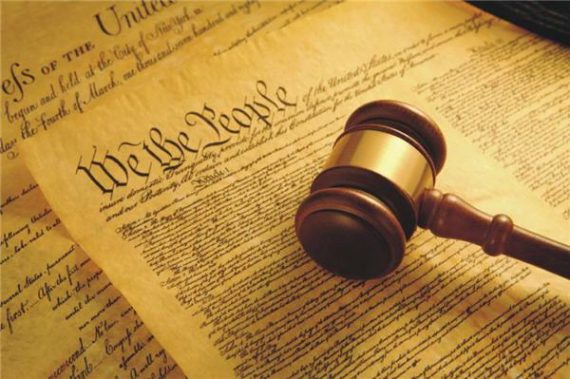

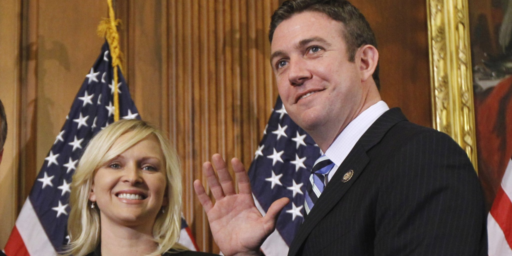
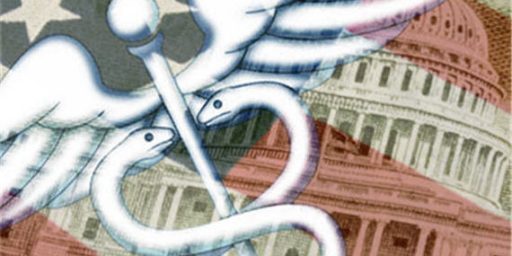
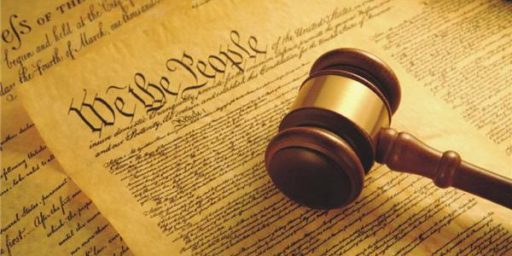
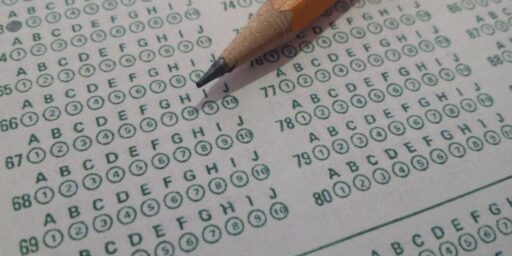
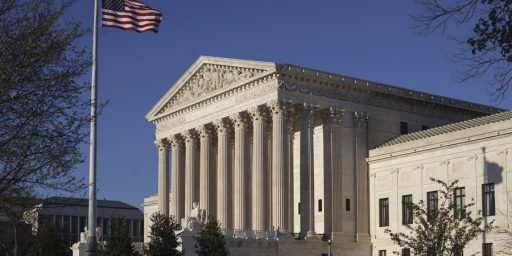
How is equal protection and affirmative action not diametrically opposed? When government gets out of the way of trying to decide who wins and who loses we will all be better off. Ask Herman Cain.
This case did not deal with affirmative action, but rather the manner in which the law was passed
Seems like an odd decision in focussing on the procedural implications, rather than on whether the principle is correct. Not surprised that any statute or constitutional provision that mentions race, however, is going to be thrown out. The implication though is that politicians need to keep running on an anti-affirmative action platform.
When equal protection is denied for centuries, then affirmative action can help to rebalance the playing field.
This is essentially arguing that if A injures B, the correction is to have C injure D, as long as A&D and B&C share the same racial identity. It’s great if your C, but B is not made whole, D is punished needlessly, and A gets off scott free.
@Wiley Stoner: Why? Does it have something to do with pizza?
But the dynamics of racial discrimination are not reducible to simple interactions between individuals. It is not just a disconnected collection of “Bs” that were inured – it was families, communities, an entire sub-culture repressed – denied education, equal opportunity to accumulate wealth, equal access to the responsibilities of full citizenship. The result is an entire environment that was/is forcibly alienated from the mainstream of American society.
Neither do I think it fair to characterize the effects of AA as some individuals injuring others (black individuals injuring whites). It is rather a decision by society as a whole to attempt to facilitate the integration of previously excluded sub-societies into the mainstream of America. I think the example of Colin Powell (an AA supporter) is illustrative. If he were white, there is every reason to believe he would have had as distinguished a career as he eventually did. Without AA however, he would not have had that. At least he believes that, and I find that quite credible.
Practically speaking this was about the worst 3-judge panel you can get on the 6th Circuit, so the result here is not really all that surprising. Judges Cole and Daughtrey both are Clinton nominees and are barking liberal Moonbats. Judge Gibbons is a very good judge, but it’s tough to do your best work when you know in advance you’re going to be outvoted 2-1.
In any event, if this goes to en banc review it’ll likely be reversed thereby allowing this law to stand. If it goes straight up to the SCOTUS it’ll very likely get reversed, unless Rambobama’s teleprompter unfortunately were to seat another justice in between now and then.
On the larger issue of government discrimination, i.e., “affirmative action,” the only way in which someone actually could support such nonsense is if they’re a bigot, or an idiot, or if they’re on a perpetual guilt trip, or too young and inexperienced to have a clue, or if they’re so weak minded as to believe the left-wing fallacy that redressing prior wrongs by engaging in the same insidious behavior not only is acceptable but is acceptable as official government policy.
OK, let’s sum up:
Making it illegal to discriminate on the basis of race is racially discriminatory.
Refusing to buy a product is affirmatively engaging in interstate commerce.
Dropping bombs and missiles on a sovereign nation in hopes of removing the leader (preferably by killing him) is not war.
I think I need a lobotomy to follow the current thinking coming out of this administration and the left in general…
J.
Doug,
????
(appreciate the link)
I really wonder about those who feel free to comment with out bothering to read the decision.
As an administration aside: Tano’s comment at 16:13 and Tsar Nicholas’ at 17:17 are concealed due to the comment ratings. There’s nothing wrong with these comments; can OTB change the senstivity level?
PD, I mentioned on the announcement article that the new hide policy seems to hit conservatives more than liberals here. Possible explanations are that conservatives tend to say more outrageous things, liberals are more quick to take offense, liberals are more likely to participate in “groupthink” exercises and seek validation through processes like this, liberals are more eager to censor their opponents, and sunspots.
I’m leaning towards a combination of all except the first, and maybe not the sunspots.
J.
I’m sure that for some people, there is nothing that can’t be blamed on liberals…yes, they are just so much more sensitive than conservatives (yet it is a conservative who is offering all these anti-liberal reasons why his poor fellow conservatives are being singled out) and so much more censor-friendly than conservatives (some evidence to support this claim would be nice)…damn liberals…
So, Interested, are you “interested” in challenging either my observations or theories?
And yeah, “theories.” Not “claims.” Didn’t claim anything, just tossed out possibilities.
Thought not.
J.
Ohhhhh…big tough Jay…your explanations are indeed just observations and theories…possibilities among many, many other bits of hot air…not much to challenge, really, as the traits you described could easily be attributable to liberals or conservatives…